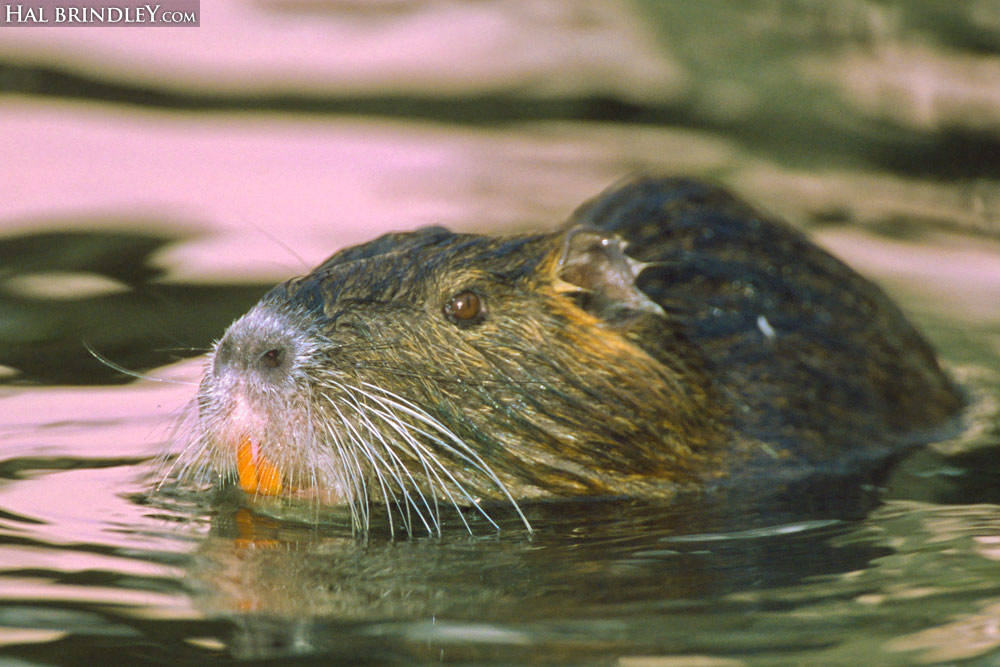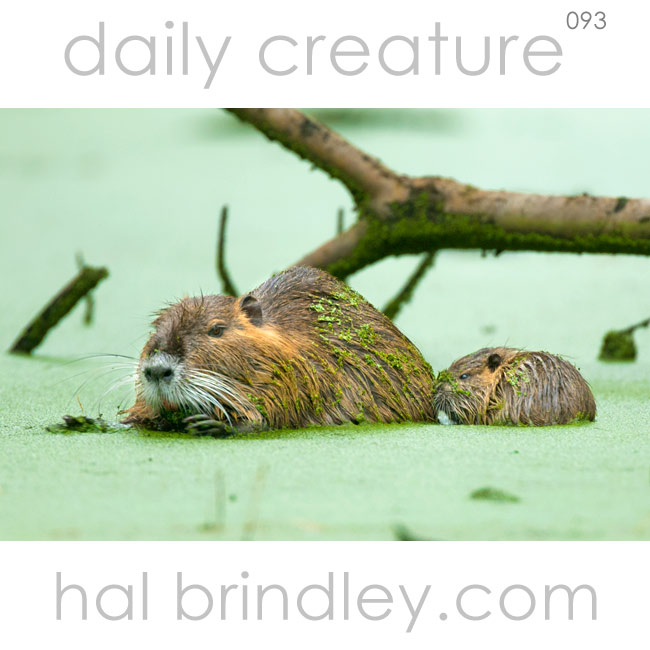Coypu (Nutria)
(Myocastor Coypus)
Honestly I had no idea this animal was called a Coypu until I started writing this post. That’s because in the U.S., we call it a Nutria. This semi-aquatic rodent is native to southern South America, but has been introduced extensively around the world for the fur industry and supposedly to control water plants.
Nutria began appearing in fur farms in Louisiana in the 1930’s. Since then the population has expanded throughout the southeastern United States. I see them regularly in the Outer Banks of North Carolina which is where I photographed this mother and baby. But these unwitting residents are now considered a pest due to damage they wreak upon native wetland vegetation.
For decades more than a million Nutria were killed annually for the fur industry. When the fur market thankfully became unfashionable in the 80’s, a Nutria population explosion followed. Now population control is the hands of the government, who is once again encouraging people to trap and shoot them.

“Invasive” species are a tricky subject. These animals didn’t want to come here; it was humans that brought them. Now that we have, we intend to kill them all because of the damage they are now inflicting upon the ecosystem. I understand the desire to protect ecosystems and bio-diversity. But I hate the thought of these cute little guys getting shot in the head in the name of conservation. Is there a better way? Yes, stop moving species around the world in the first place.
And if invasive species should be killed to protect ecosystems, shouldn’t we logically then eradicate the most invasive species of all which is causing all these problems in the first place? (That would be us.) See, tricky subject.
Photographed at Nags Head Woods Preserve, Nags Head, North Carolina, USA.
